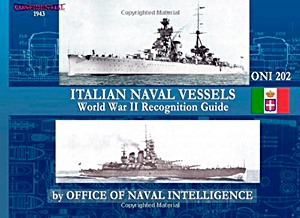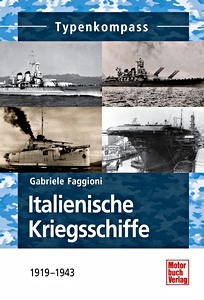Italian Naval Vessels: WWII Recognition Guide
Originally printed in 1943, ONI 202 Italian Naval Vessels presents a categorical description of the various Italian warships that comprised the Regia Marina during WWII.
Created by the Office of Naval Intelligence, it was one of a series of classified recognition guides produced for officers and staff. It contains numerous data tables, designation information, and dozens of illustrations compiled from a wide variety of sources, including intelligence reports and reconnaissance photographs.
The book includes the full catalog of ships in service ranging from the Cavour and Littorio class battleships to the cruisers, destroyers, submarines, mine vessels, torpedo boats, transports and tenders that serviced the fleet.
ONI 202 is surprising in its range and detail. Browsing through its pages you'll find silhouettes, photographs and photos of models, airbrushed renderings and drawings, and detailed plans and profiles of various classes of warship, making this a must-have book for the historian and modeler.
This high quality reprint of this now-declassified book is slightly reformatted but presents the original text in its entirety.
Caractéristiques
| Auteur : | US Office of Naval Intelligence (ONI) |
|---|---|
| Présentation : | 92 pages, 15.5 x 21 x 0.5 cm, broché |
| Illustration : | abondamment illustré avec des photos et des dessins |
| Editeur : | Periscope Film (USA, 2013) |
| ISBN: | 9781940453255 |

Italian Naval Vessels: WWII Recognition Guide
Langue : anglais
Acheter sur Amazon FranceAcheter sur Amazon Belgique
Acheter sur Amazon Canada
Livraison rapide, retour simple






![Pages du livre [TK] Italienische Kriegsschiffe 1919-1943 (1)](../afb/details/PP03551.jpg)


![[NVG] Italian Battleships of World War II](../afb/BLB/9781849083805.jpg)
